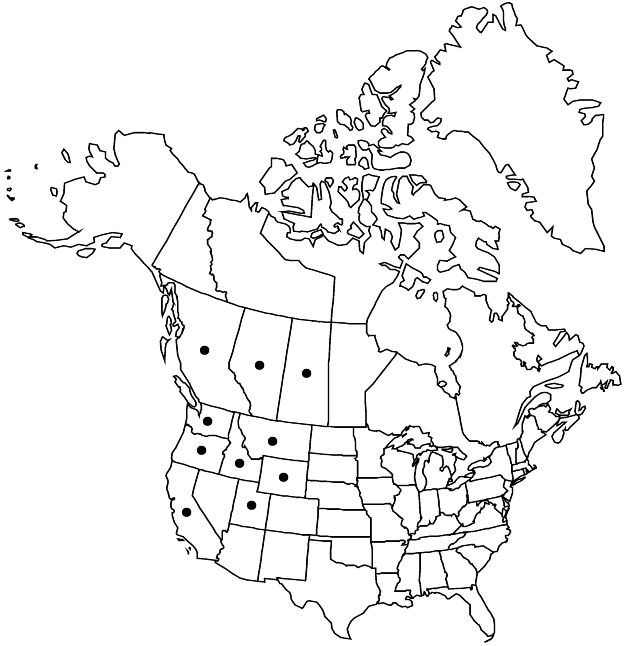Crataegus castlegarensis
Sida 20: 121, figs. 3, 4. 2002.
Shrubs, 25–50 dm. Stems erect; branches spreading; 1-year old twigs brown; thorns on twigs usually branched, some paired or in triads, straight to slightly recurved, dark brown with blackish tip young, 2–3 cm. Leaves: petiole 0.7–1.5 cm, pubescent, eglandular; blade oblanceolate to ovate-rhombic, 3.5–6 cm, lobes 3 or 4 per side, sinuses shallow to deep, lobe apex usually acute, margins serrate, teeth apices finally glandular young, venation craspedodromous, veins 4 or 5 per side, apex broadly triangular, abaxial surface sparsely hairy or glabrous except on veins, adaxial conspicuously appressed-pubescent young, glabrescent except on midvein. Inflorescences 12–20-flowered; branches sparsely to densely pubescent; bracteole margins stipitate-glandular. Flowers 12 mm diam.; hypanthium pubescent or glabrous; sepals triangular, 3 mm, margins remotely glandular-serrate; stamens 10, anthers pink; styles 3 or 4. Pomes crimson (mid Aug) turning to reddish plum or, ultimately, blackish purple, orbicular, ± oblate (recessed at junction with pedicel), 10 mm diam., sparsely pilose; sepals reflexed, apex obtuse; pyrenes 3 or 4, sides usually pitted. 2n = 68.
Phenology: Flowering May–Jun; fruiting Sep–Oct.
Habitat: Mesic brush
Elevation: 300–1200 m
Distribution

Alta., B.C., Sask., Calif., Idaho, Mont., Oreg., Utah, Wash., Wyo.
Discussion
Crataegus castlegarensis occurs from around the northern Okanagan, British Columbia, to the northern California Coast Ranges, to northwestern Montana, and the Rocky Mountains to northeast of Salt Lake City, Utah. The species occurs also in the Cypress Hills of Alberta and Saskatchewan; it is found in habitats similar to those of C. douglasii and is at least as abundant as that species in a number of parts of its range.
Crataegus castlegarensis is readily recognized by a combination of hairy inflorescence branches, pomes more or less orbicular, crimson or burgundy (with irregular earlier ripening) around the third week of August, soon becoming purple, often when nearby C. douglasii is already black, as well as a tendency to possess thorns on the young twigs branched at the base to become double, triple, or even sometimes quadruple. Such multiple thorns, though sometimes abundant on a bush, are more often few and may require searching for. Inflorescence pubescence, as in other species with this characteristic, may become sparse by fruiting. Crataegus castlegarensis is most similar to C. douglasii; its fruit is usually more orbicular, even oblately so, than is normal in that species, sometimes even with a recessed junction to the pedicel like an apple.
Selected References
None.